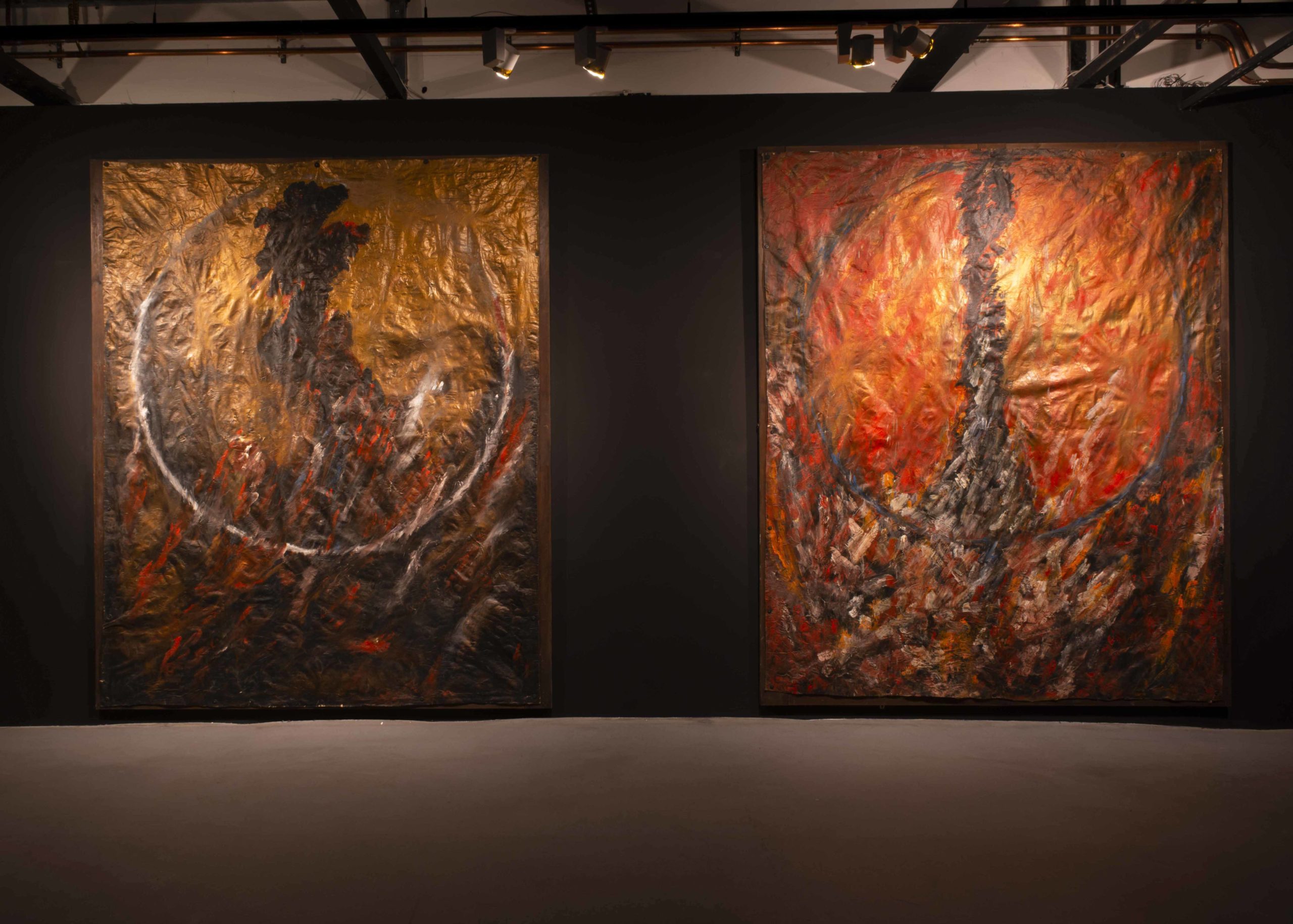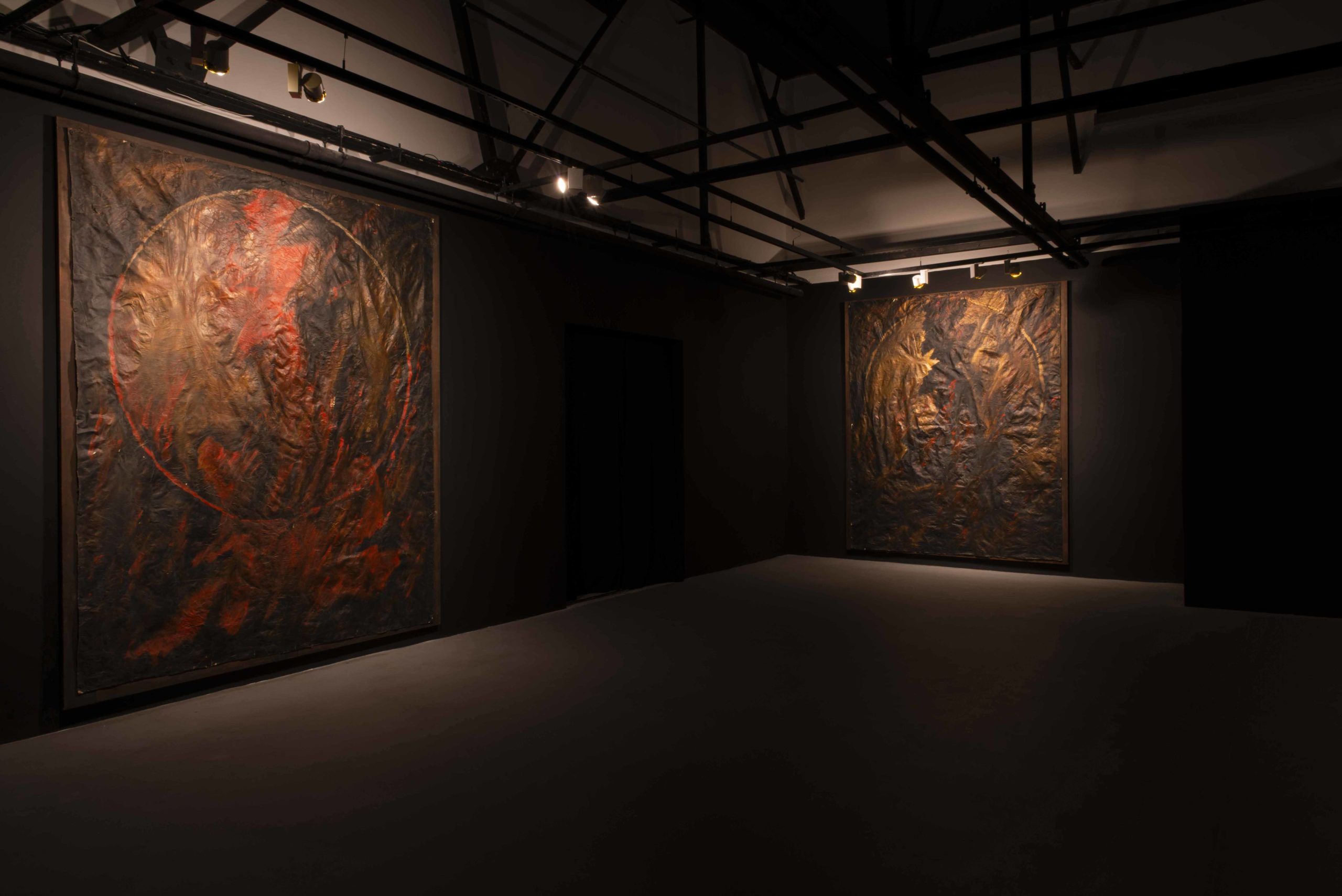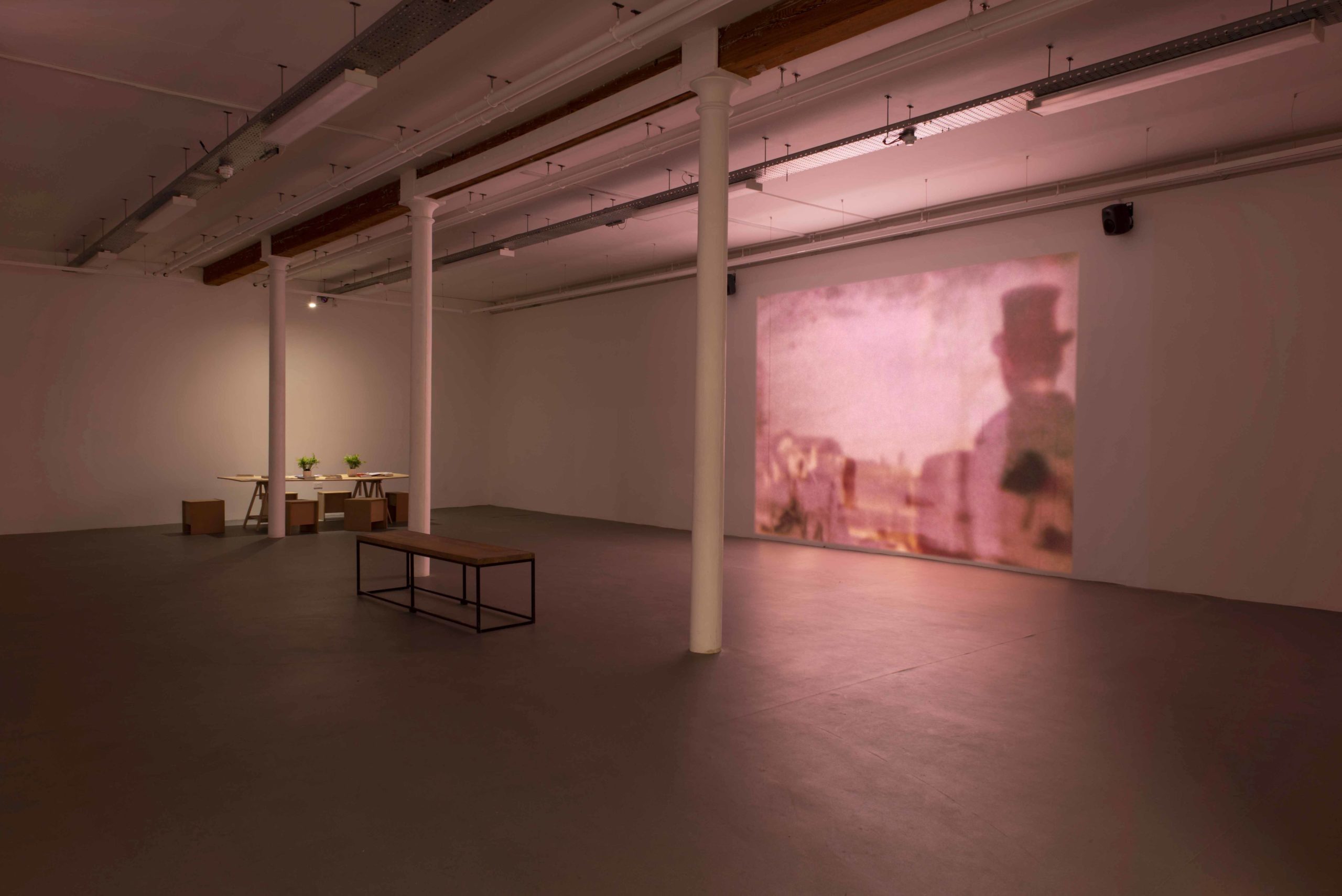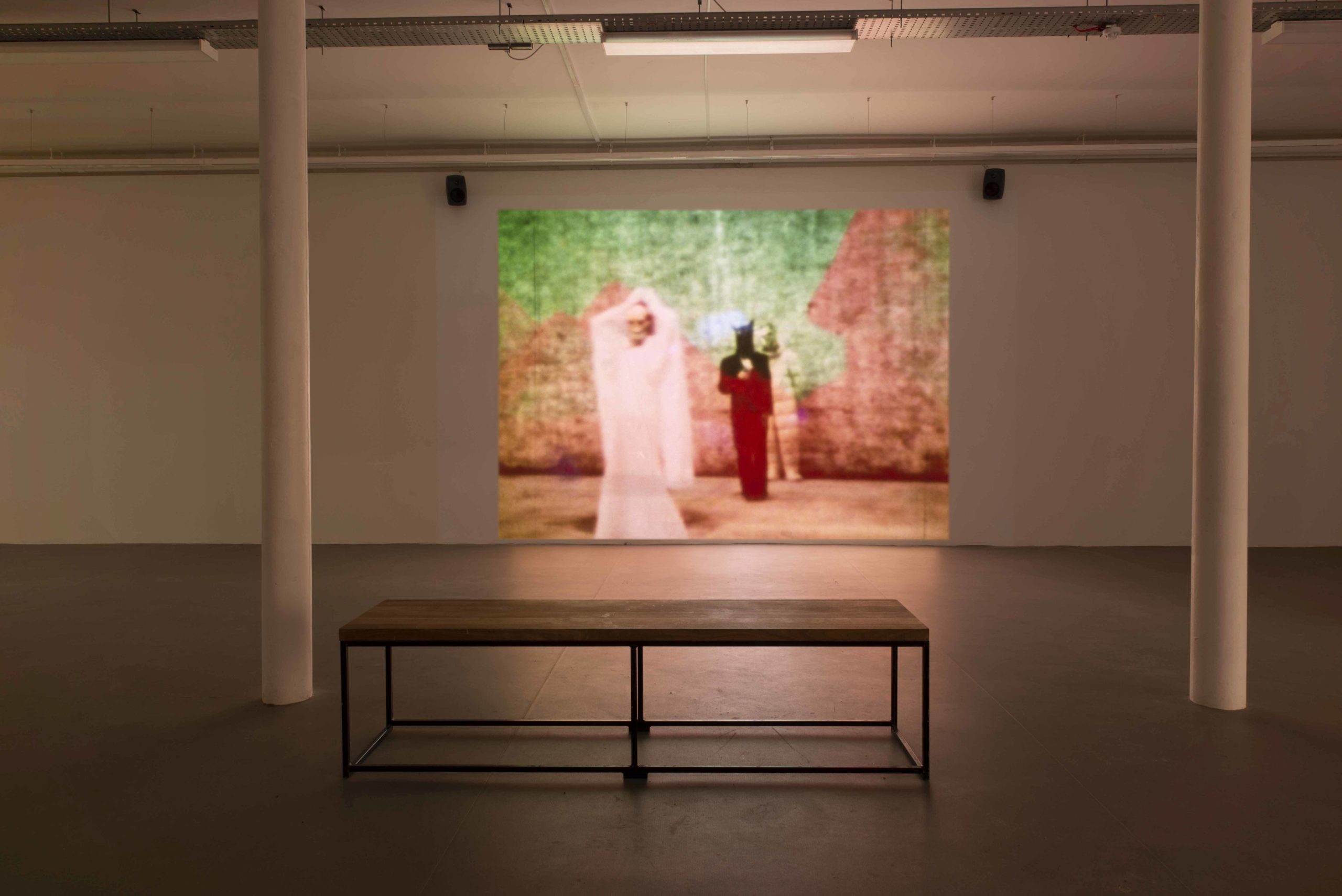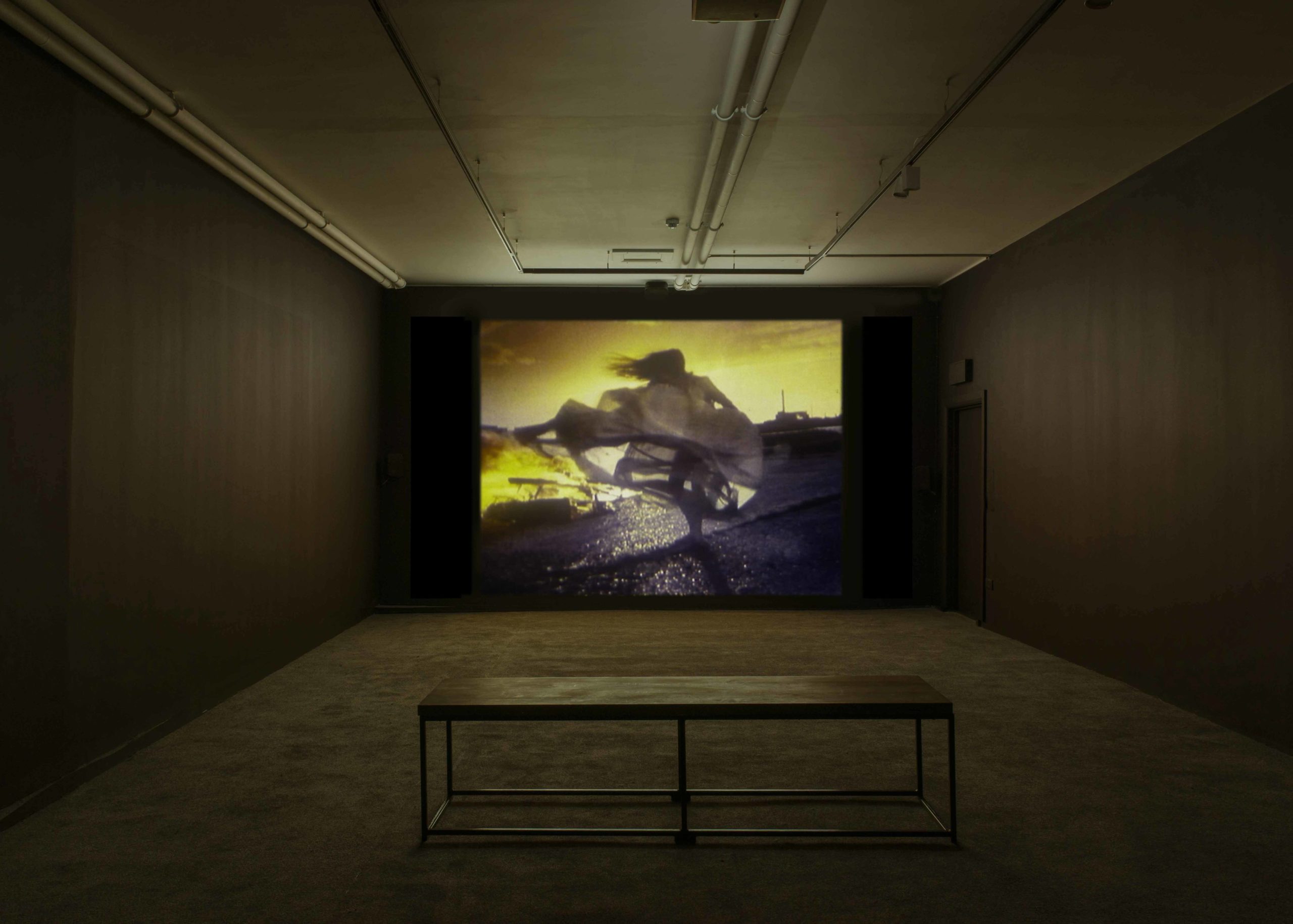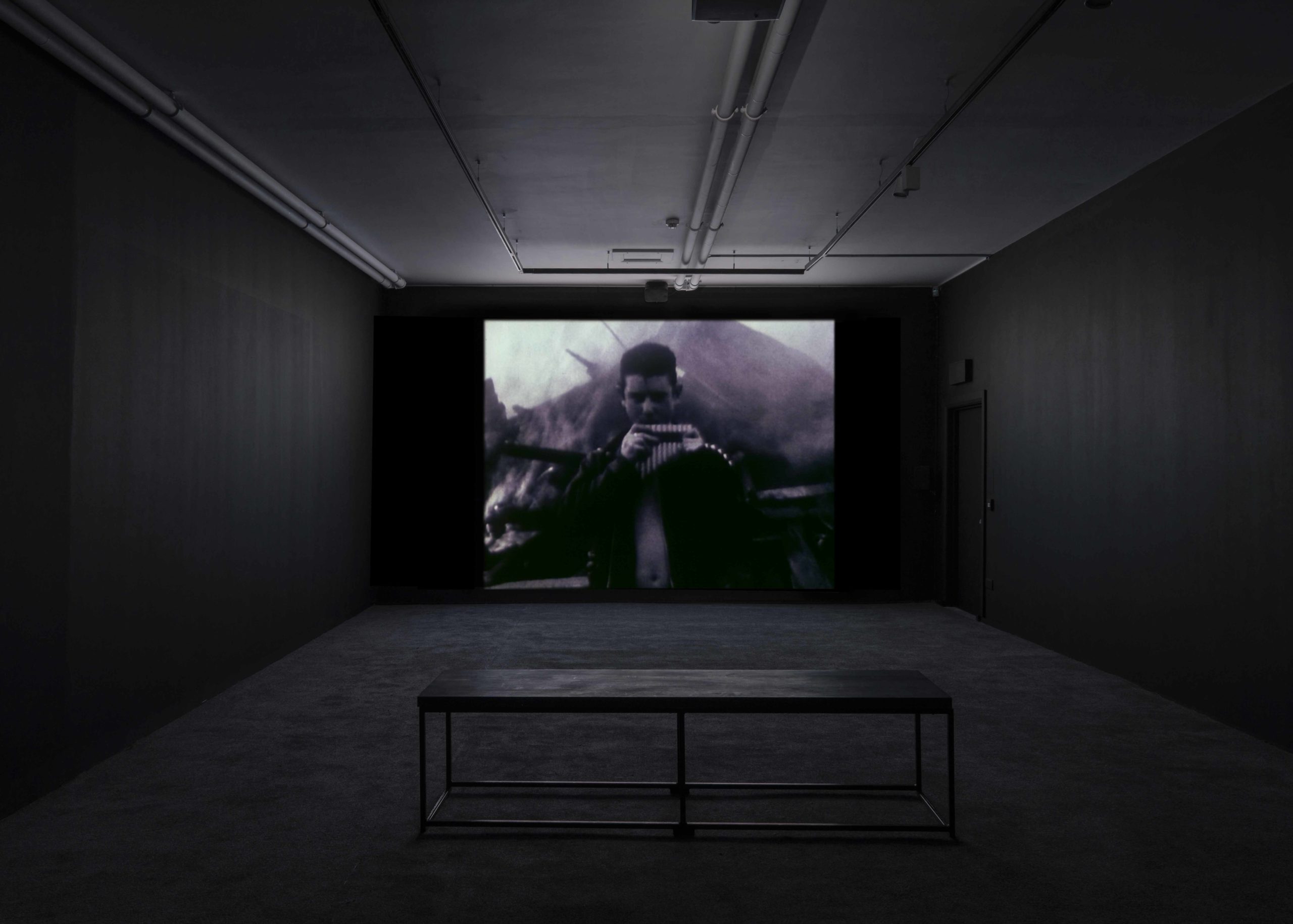The Last of England, an exhibition by Derek Jarman at Void Gallery in 2019/20, explored the work of one of Britain’s most iconic filmmakers, painter, writer, gardener and political activist. During the ‘80s and ‘90s, Jarman shifted from being apolitical – with his films documenting his private life in a ‘cinema of small gestures’ – to being at the centre of the queer movement, with his activism firmly integrated into his films. In this exhibition Jarman’s politics and activism are at the forefront; the GBH painting series (1983-84) and his film The Last of England (1987) reflect and resonate with our current political crisis.
The culmination of these works at Void allowed for both a celebration of his work and highlighted the continuing need to agitate and disrupt. The legacy of Jarman’s work and gay rights activists both past and present are demonstrated in recent societal and legislative changes; legalisation of gay marriage in Northern Ireland. Jarman’s work is prescient and has a strong resonance to our times.
The Last of England
Created in response to social injustices of the late ‘80s, the themes of The Last of England still reverberate widely across contemporary Britain and Northern Ireland. Jarman’s apocalyptic, postcolonial depictions of the ‘fall of England’ – reflecting the country’s desire to return to its ‘imperial days’ – are ever present in the current political landscape, from Brexit, parliamentary suspensions and the absence of a government at Stormont, to the rise of nationalism, fascism and state surveillance. We are at an impasse in Northern Ireland and are once again at the mercy of Westminster decision-making. The film references the AIDS epidemic and the collective trauma that was experienced at that time. The film was initially going to be titled GBH The Last Of England, reflecting the destruction of the landscape and culture of England, and more personally the body through AIDS. Jarman said the GBH could stand for “whatever you want it to: grievous bodily harm, great British horror, gargantuan bloody H-bomb”. Instead he used the GBH title for his painting series, depicting the map of England in various stages of being enflamed. In exhibiting these works, it punctuates this particular moment in Northern Ireland and the UK political history, to show the parallels in the political struggle from then and now.
In the Shadow of the Sun
In the Shadow of the Sun (1981) was also exhibited, reflecting his earlier works that are more biographical; a series of Super 8 films that were shot between 1972 and 1975, edited together with the soundtrack by Throbbing Gristle. This film was part of a body of film works referred to as the ‘cinema of small gestures’; the use of filters and the atmosphere of the film contrasts the dystopic sensibility of The Last of England.
Derek Jarman Biography
Derek Jarman (1942-1994) was an English film director, stage designer, diarist, artist, gardener, political activist and author. He was educated at the University of London and at the Slade School of Art. In 1967 Jarman exhibited in Young Contemporaries, Tate Gallery, London (prizewinner); Edinburgh Open 100, Lisson Gallery, London and Fifth Biennale des Jeunes Artistes, Musée d’Art Moderne, Paris. Jarman’s first work in the cinema was as a set designer on Ken Russell’s The Devils (1971), selected set designs include Savage Messiah (1972) and The Rake’s Progress (1982) with numerous designs for stage and ballet. Jarman’s first films were experimental Super 8mm shorts, his first full-length feature film Sebastiane was released in 1976, followed by selected films Jubilee (1978), Angelic Conversation (1985), Caravaggio (1986), The Garden (1990) and Edward II (1991).
Selected solo exhibitions: Sarah Bradley’s Gallery, London (1978); Edward Totah Gallery, London (1982); ICA, London (1984); Richard Salmon Ltd., London (1987) and Whitworth Art Gallery, Manchester (1994). Jarman also wrote several books, including the autobiographical Dancing Ledge (1984) and two volumes of memoirs, Modern Nature (1992) and At Your Own Risk (1992). Derek Jarman’s Garden, which documents the creation of his extraordinary garden at Dungeness was published in 1995.
PROTEST!, published by Thames and Hudson, 2020
Void are delighted to have our recent exhibition The Last of England featured in this new monograph on Derek Jarman, co-published by IMMA and Thames & Hudson on the occasion of the major retrospective of his work PROTEST! at IMMA Dublin.
This new publication, edited by IMMA‘s Sean Kissane, Curator of Derek Jarman PROTEST!, Karim Rehmani-White from Thames & Hudson and designed by Niall Sweeney from Pony, follows the major retrospective at IMMA and Void and accompanies the shows Manchester Art Gallery, Yale Center for British Art and John Hansard Gallery.
It offers a definitive overview of Derek Jarman’s life and work, covering all aspects of his oeuvre, from his feature films and Super 8s, his painting, design for theatre, memoir, poetry, gardening and political activism – all with a view to highlighting the artist’s wizardry with word and image and his passion for collaboration, community and social justice.
With newly commissioned and classic texts from a wide range of authors and 600 illustrations, many previously unseen, this book brings fresh and surprising insights into the world of this iconic artist. Texts by: Jonny Bruce, Michael Charlesworth, Mary Cremin, Jeffrey Horsley, Philip Hoare, Chrissie Iles, Isaac Julien, Sean Kissane, Olivia Laing, Christopher Lloyd, James Mackay, John Maybury, Robert Mills, Charlie Porter, Norman Rosenthal, Jon Savage, Joanna Shepard, Peter Tatchell, Karim Rehmani-White and Roger Wollen.
How to order
Special Price at this time: €35.00 (RRP £48) plus postage.
Order your copy now on the IMMA Shop.
Find out more about Derek Jarman’s exhibition PROTEST! on IMMA’s website.
The exhibition coincides with a major retrospective of Jarman’s work at the Irish Museum of Modern Art in partnership with Manchester Art Gallery (2 Apr – 31 Aug 2020), and is accompanied by additional projects at John Hansard Gallery, Southampton.
Acknowledgements
This exhibition was produced in collaboration with IMMA, Whitworth Gallery, John Hansard Gallery, and Amanda Wilkinson Gallery.
Kindly supported by Euro London Films, LUMA Foundation and St Columb’s Hall.
Void Gallery is supported by the Arts Council of Northern Ireland, Derry City and Strabane District Council, and Northbound Brewery.


